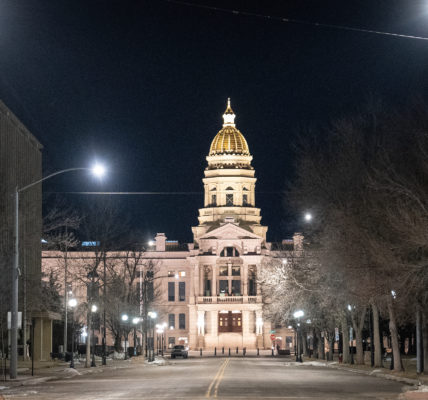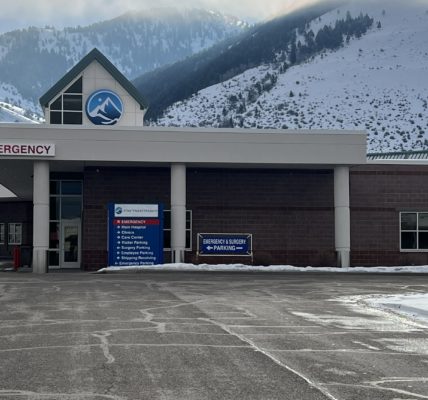By Clair McFarland
Riverton Ranger
Via- Wyoming News Exchange
RIVERTON — Citing citizens’ legal rights to defend their own lives and the lives of others from “immediate peril,” the Fremont County Attorney’s office will not prosecute the Riverton Police Department officer who was involved in the storefront, Sept. 21 shooting of Anderson Antelope, in Riverton.
The RPD officer still has not been identified publicly.
Fremont County Attorney Patrick LeBrun announced the decision Friday, culminating a two-month investigation into the incident by the Wyoming Division of Criminal Investigation.
Titled “Determinations and conclusions,” the document uses the DCI’s evidence and its compilation of no fewer than six eyewitnesses, all interviewed separately, to recount the fatal shooting of 58-year-old Anderson Antelope, and what led up to it.
On Saturday, Sept. 21, at approximately 1:30 p.m., an employee at Walmart in Riverton called law enforcement because “a man known to be Anderson Antelope Sr. was intoxicated and driving one of the Walmart electric carts in and out of the parking lot,” LeBrun’sstatement reads.
Public intoxication is a violation of Riverton city ordinance.
An RPD officer arrived roughly 15 minutes later, to find Antelope sitting at a picnic table, eating a hot dog near where a local veterans organization was selling food as a fundraiser.
The officer approached Antelope and asked about his condition. Witnesses reported that “the officer spoke politely during this time,” LeBrun wrote.
The officer asked Antelope to take a breath test to determine his intoxication level, but though he agreed to take the test, Antelope “refused to blow properly into the machine.”
His blood-alcohol concentration was later determined to be .284 percent.Wyoming’s legal limit for intoxication is .08.
Because Antelope’s intoxication was apparent to the officer and to bystanders, the officer told Antelope he was being placed under arrest. “Antelope became angry during this time and was yelling.”
To help Antelope to his feet and place him under arrest, the officer used “a common wrist control technique” by which he grabbed his subject’s left wrist.
Eyewitnesses recalled Antelope stating, in essence, “You’re going to need help; you’re not big enough, and I am not going anywhere.”
When the officer tried to calm Antelope, one of the witnesses began speaking to the officer, diverting his complete attention from the intoxicated man.
“This momentary distraction appears to have allowed Mr. Antelope sufficient stealth to retrieve a concealed knife approximately six inches in length using his right hand,” LeBrun wrote. “Antelope then attempted to drive the knife into the officer’s chest,” but was thwarted by the rifle plate in the center of the officer’s vest.
The officer “both observed and felt the knife impact his chest.” The Wyoming Crime Laboratory would later discover the cut in the vest.
Six eyewitnesses watched Antelope swing the knife at the officer.
“Antelope placed the officer in an untenable position,” in which he was surrounded by several people within a five- to 10-foot range of Antelope, “who was armed and clearly trying to kill,” wrote LeBrun.
The officer could not release Antelope’s left arm, due to the concern that the latter would try to stab bystanders, among whom there was at least one man in his 80s.
“Under these circumstances, the officer had no other option than to stand his ground, draw his firearm, and demand that Antelope drop the knife” – a demand he made at least twice, LeBrun wrote.
“When it became apparent to the officer that Antelope was trying to strike with the knife again, the officer discharged his firearm.
“Antelope was killed instantly,” by a gunshot to the head.
LeBrun’s conclusion defers to Wyoming law, which provides that a person with a reasonable belief that his life or the lives of others are in “immediate peril at the hands of another… may take all actions necessary at that moment to preserve his life and the lives of others, which includes deadly force.”
Due to the documented succession of circumstances, LeBrun wrote, “the only reasonable action… the officer could have taken was exactly the action that he took. Had he done otherwise, not only would he have jeopardized his own life, but the lives of the citizens in the immediate vicinity.”
LeBrun wrote further that he has examined “each interview, crime lab analysis and all other pieces of available evidence.”
Following an investigative work he called “complete and thorough,” he wrote that it is his “duty and obligation” to draw the legal conclusion of the facts and provide it to the public.
That legal conclusion is that the officer “had the absolute right to defend his own life, and the lives of the several people within his immediate vicinity, with deadly force. Every action (he) took was proper and lawful.”
LeBrun’s office will take no prosecutorial action.
Fremont County Coroner Mark Stratmoen announced the Monday after the shooting that it is his policy to conduct an inquest into each officer-involved shooting in the county, “to arrive at a cause and manner of death” in the case.
LeBrun countered in a letter to The Ranger Oct. 23 that the cause and manner of death – homicide by gunshot wound – were obvious, and an inquest into the obvious would be a superfluous use of taxpayer funds.
The county attorney raised the issue once more in his legal conclusion of the shooting and investigation, writing that “even though a final determination has been made, the coroner in Fremont County insists on a public display that can serve no purpose,” but seems rather “to delay the healing process, while putting the officer, and numerous other private citizens, through an unnecessary, expensive and possibly humiliating public spectacle.”
“The community,” he wrote, “may reflect on holding a taxpayer-funded hearing when all determinations have been made in the case, and when according to Wyoming law… the process has ‘no probative effect.'”
LeBrun cited grave legal concerns with the inquest, as well as with the coroner’s consideration of appointing State Rep. Andrea Clifford (D-Ethete) as a juror over the hearing, due to her public comments on the shooting.
Clifford has stated that “we do have a Northern Arapaho tribal member on that police force, and I do believe that if he had been the one that had answered that call, Andy would still be alive today.”
Both Clifford and the late Antelope are enrolled members of the Northern Arapaho Tribe.
LeBrun called Clifford’s presumed “bias” against the officer one of several indications that the inquest, as approached, is “defective.”
“No person’s actions should be scrutinized and analyzed under incorrect presentations and assumptions of the law,” he wrote.







